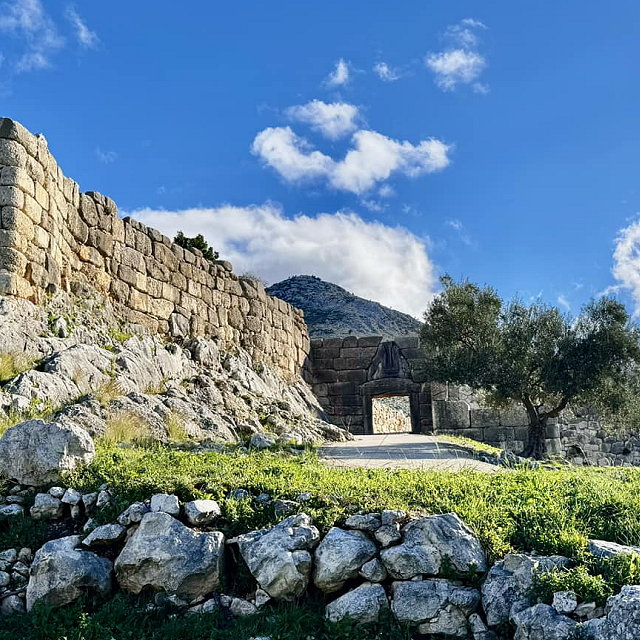
|
Archaeological site of Mycenae Mykines 212 00, Greece ☎ +30 2751 076585 Last Updated: 11/15/2024 |
| The archaeological site of Mycenae, located in the northeastern part of the Peloponnesian Peninsula in Greece, is one of the most significant historical sites from the Late Bronze Age. It flourished during the second millennium BCE and is often considered the center of the Mycenaean civilization, which greatly influenced Greek culture and mythology. | |
| The most famous feature of Mycenae, the Lion Gate dates to around 1250 BCE. It is named for the relief sculpture of two lions or lionesses flanking a column above the entrance. It served as the main entrance to the citadel and is a masterpiece of Mycenaean architecture. Grave Circles A and B are burial sites containing shaft graves that have yielded some of the most significant finds from Mycenae, including gold masks, weapons, and jewelry. The Mask of Agamemnon, a gold funeral mask discovered by Heinrich Schliemann, is one of the most iconic artifacts, though its attribution to Agamemnon is debated. At the heart of the citadel lies the Mycenaean palace, characterized by a central megaron, frescoed walls, and storerooms. The palace served as the administrative and ceremonial hub. The massive stone walls surrounding the citadel are known as Cyclopean because later Greeks believed they were built by the Cyclopes due to their size and the technical skill required to construct them. | |
Website Wikipedia Facebook
Greece » Grc
Place » Historical Place

|
Archaeological Site of Olympia Place » Historical Place The Archaeological Site of Olympia, located in the Peloponnese region of Greece, is one of the most important ancient sanctuaries in the world. Known as the birthplace of the Olympic Games, it served as a major cultural and religious center in ancient Greece. 56 views 💖 1Archaia Olympia 270 65, Greece |

|
Greece Place » City Greece is a country in Southeast Europe. It is situated on the southern tip of the Balkans, and is located at the crossroads of Europe, Asia, and Africa. The country consists of nine traditional geographic regions, and has a population of approximately 10.7 million. Athens is the nation's capital and largest city, followed by Thessaloniki. 528 views 💖 3Greece |
Write a Review :
Archaeological site of Mycenae
|
|
